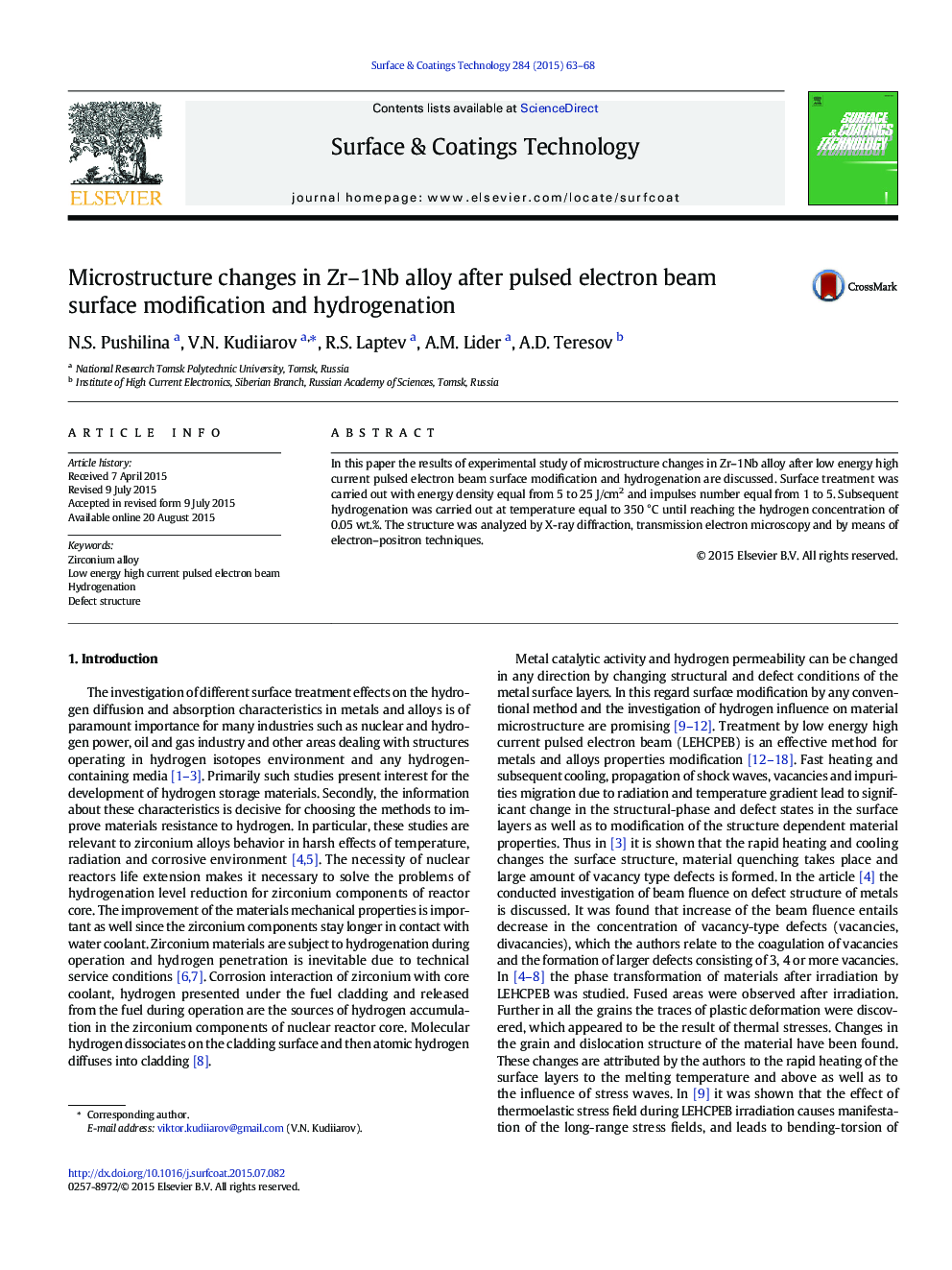| Article ID | Journal | Published Year | Pages | File Type |
|---|---|---|---|---|
| 1656596 | Surface and Coatings Technology | 2015 | 6 Pages |
•Zr was modified by pulsed electron beam with different modes and then hydrogenated.•Pulsed electron beam irradiation changes surface and defect structure at 100 μm depth.•Dislocation loops and vacancy clusters are formed after electron beam irradiation.•Vacancy-type defects concentration increases after hydrogenation.
In this paper the results of experimental study of microstructure changes in Zr–1Nb alloy after low energy high current pulsed electron beam surface modification and hydrogenation are discussed. Surface treatment was carried out with energy density equal from 5 to 25 J/cm2 and impulses number equal from 1 to 5. Subsequent hydrogenation was carried out at temperature equal to 350 °C until reaching the hydrogen concentration of 0.05 wt.%. The structure was analyzed by X-ray diffraction, transmission electron microscopy and by means of electron–positron techniques.
